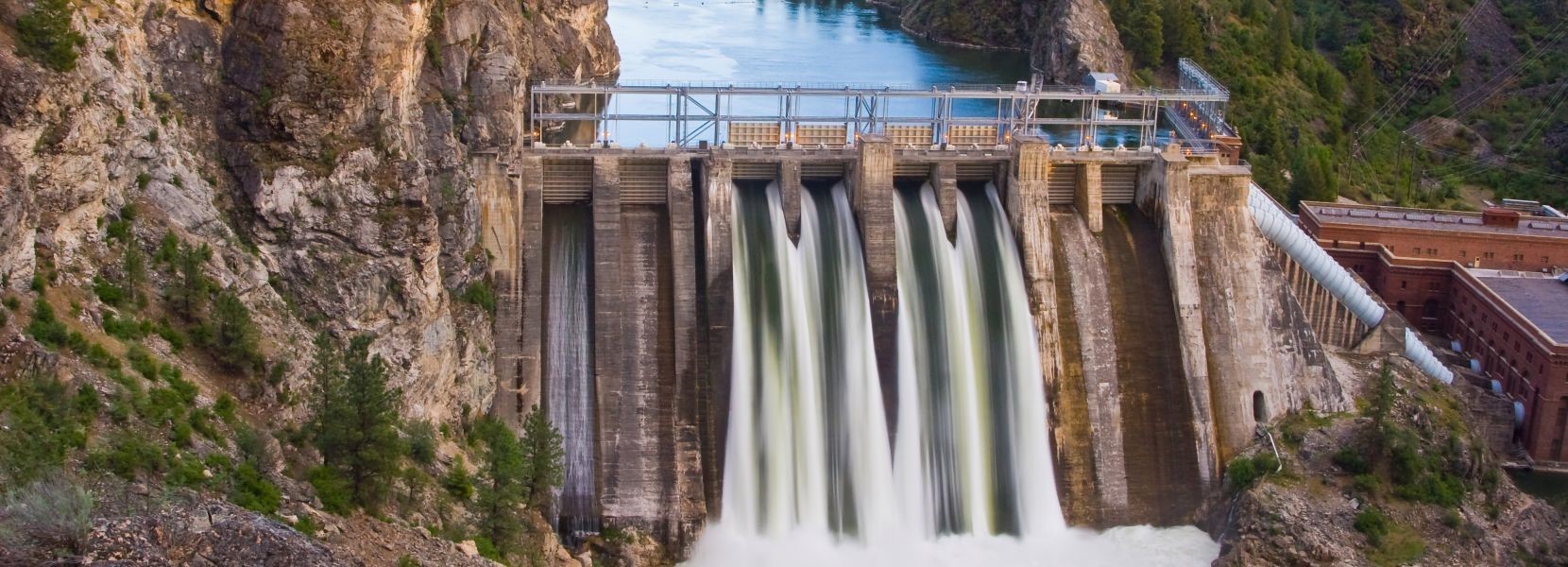
Discover the basics of hydroelectric energy
Using the power of water to create electricity
 People have been using the energy of moving water for quite some time now. Ancient Greeks used it to grind grain more than 2,000 years ago, for example. However, the first hydroelectric power plant began operating in the US along the Fox River in Appleton, Wisconsin less than 150 years ago.
People have been using the energy of moving water for quite some time now. Ancient Greeks used it to grind grain more than 2,000 years ago, for example. However, the first hydroelectric power plant began operating in the US along the Fox River in Appleton, Wisconsin less than 150 years ago.
Hydroelectric power sources make use of gravity to generate energy. It's the world's largest source of renewable electricity! However, hydropower can affect the environment. People have built dams to boost the water's gravity force, but this will usually degrade water quality, because oxygen levels will be reduced. As a consequence, aquatic habitats can be damaged, and local communities may be displaced. Still, the benefits will often outweigh the negative aspects, because hydroelectric power is an emissions-free source of energy which can help reduce CO2 emissions, and thus help us fight global warming.
As you probably know, water goes through what's called a "hydrologic cycle" on our planet. There are over 330 million cubic miles of water on Earth, and a large portion of it evaporates from the oceans. Then, the water falls back to the ground as rain or snow, being gathered into streams and rivers which flow back to the oceans. The cycle repeats endlessly, and the flowing water is captured by hydroelectric generators which create electricity.
The potential of hydroelectric energy varies from one country to the other, depending on the number of large water bodies in the area, which can serve as a source of water for the rivers and streams in the region. Hydroelectric power produced about 7% of the total US electricity last year, a figure that makes it the 4th largest producer of hydropower in the world.
To generate electricity, water has to move fast, because it needs to rotate a turbine, which is connected to a generator. People use energy to make motors rotate, right? So, we can safely say that motors convert electrical energy into mechanical energy. Hydropower generators utilize the opposite process: a specially engineered motor is rotated by making use of the force of water, and this mechanical energy is converted into electrical energy. Yes, it's that simple.
People have built dams to increase the power of water, but smaller-sized generators can also use run-of-the-river systems, in which the turbines are spun by the water as it moves along the river. These systems are easier to build and maintain, having a lower impact on the environment. Still, hydropower generators that make use of dams can produce a lot of energy quickly, when it is needed, because the dams can control the water flow. This makes them the perfect solution whenever the national power grid is overloaded and needs more energy, for example.
Hydropower energy is less expensive in comparison with conventional energy sources. People who live in states that use hydroelectric power as their main energy source (Kentucky, Arkansas, Wisconsin, Alabama, etc.) pay lower electricity bills in comparison with the rest of the country.
Since hydropower is fueled by water, it doesn't pollute the atmosphere. Additionally, it is a domestic power source, which means that each state can produce energy for the people in the region without having to rely on international power generators and sources.
By making use of hydroelectric power, we can help preserve fossil fuels. Hydropower can also serve as a backup electricity source, because the generators can send power to the grid instantaneously. While it is true that man-made dams can affect the environment, some of them are actually useful, because they help control floods, can serve as water sources, or are used in advanced irrigation systems.